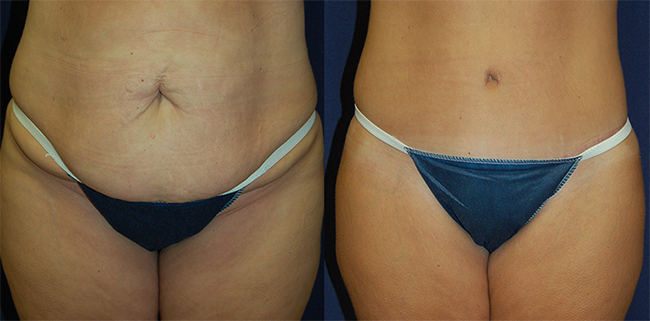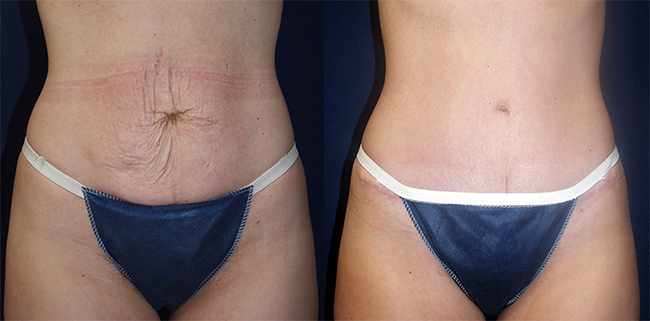Oh that stubborn belly fat! Love it, hate it or embrace it. Whether it’s a pouch of fat and excess skin due to pregnancy, aging or genetics, a tummy tuck remains one of the most sought after plastic surgery procedures. After all, who wants to wear skinny jeans with a muffin top? Thankfully, it’s becoming more tolerable and less painful due to medical advances in the operating room and beyond.
By Stephan J. Finical, MD
and Beverly Brooks
The Plastic Surgery Channel
What is a Tummy Tuck?
An abdominoplasty, or tummy tuck, can flatten your stomach by removing loose, excess fat and skin and tightening muscles in the abdominal wall. It can also remove some, if not all of the stretch marks in your lower abdomen. It is popular following pregnancy, massive weight loss, or whenever a flabby abdomen with weak muscles impairs body contour. According to the American Society for Aesthetic Plastic Surgery, most patients report improved self-esteem as a result of this procedure.
When to Consider a Tummy Tuck
- You have flab and excess skin in your abdomen that doesn’t improve through diet and exercise
- The shape of your abdomen has been affected by pregnancy, massive weight loss or aging
- You feel your protruding abdomen is unattractive and affects your self esteem
You have had all your children and are ready to tighten those tummy muscles and firm up. Board certified plastic surgeon Dr. Stephan Finical says it’s comforting for surgeons and the patient to know the tummy tuck your mother had several years ago is now much more tolerable. “Ladies come in after they’ve had all their children and need some extra help eliminating fat, things that diet and exercise simply can’t correct,” says Dr. Finical. “After child bearing, the stomach gets stretched out and a tummy tuck tightens the skin and muscle.”

Less Pain, No Drain!
A modern surgical technique is available which minimizes post-operative care and eliminates drains to reduce complications. The Progressive Tension Suture technique improves recovery and allows the patient to sit upright much sooner. PTS closes space between the skin and the muscle so that there is less opportunity for fluid collection. This in turn means no drains, and no tight belts, each of which can cause problems in the post-operative period. PTS can also be used to shape the abdominal contour and get the most from your abdominoplasty. Traditional methods require a severe limitation of activity.
Pain Control
An exciting breakthrough drug, Exparel, promises to reduce pain during abdominoplasty recovery. “Exparel is a long acting anesthetic medicine that takes the pain away for three days,” says Finical. “This allows our patients to be up and around, get the circulation going, and reduces the need for relying on narcotics to reduce the pain.”

Recovery
The first few days after surgery you should rest quietly and arrange for someone to help you get around the house and assist with medication. You won’t feel yourself for at least seven to ten days, and you won’t want to do any heavy lifting for four to six weeks.